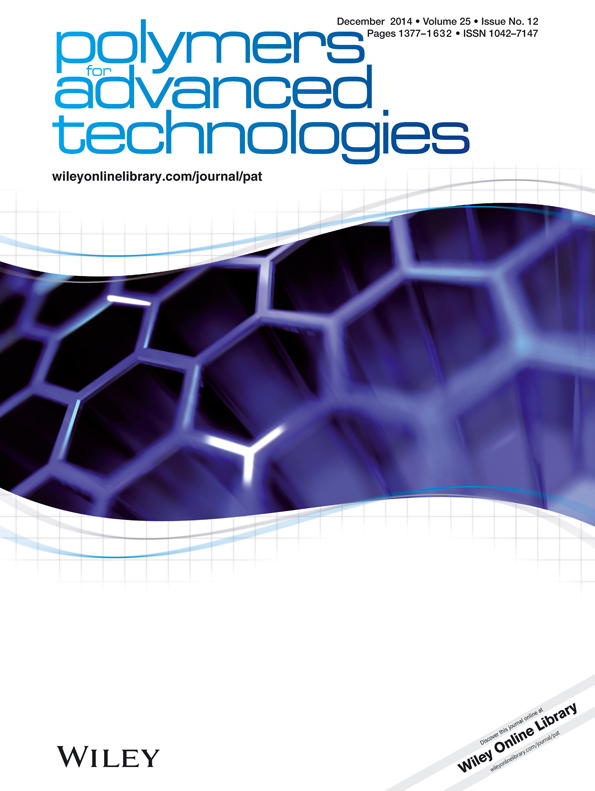Tuning gradient property and initiating gradient photopolymerization of acrylamide aqueous solution of a hydrosoluble photocleavage polysiloxane-based photoinitiator
Abstract
A novel hydrosoluble photocleavage polysiloxane photoinitiator W-Si-HHMP2 used for preparing a gradient polymer was synthesized on the basis of 2-hydroxy-1-[4-(2-hydroxyethoxy)phenyl]-2-methyl propan-1-one (HHMP) and aminopolysiloxane. The water solubility of the photoinitiator, the kinetics of photopolymerization, and the self-floating ability were investigated. This photoinitiator shows relatively good solubility in water and excellent photoinitiating efficiency, and has good floating capability due to lower surface tension and energy of polysiloxane. More importantly, it is proved that the gradient polymer with gradient molecular weight was obtained by controlling the concentration gradient of W-Si-HHMP2 and presented an excellent yellowing resistance. The enrichment of W-Si-HHMP2 on the surface caused by its good self-floating ability can decrease the dispersion surface energy of gradient polymer film and generate a more hydrophobic surface. The W-Si-HHMP2 can efficiently initiate gradient photopolymerization to prepare gradient materials and has a great potential application in gradient materials. Copyright © 2014 John Wiley & Sons, Ltd.




